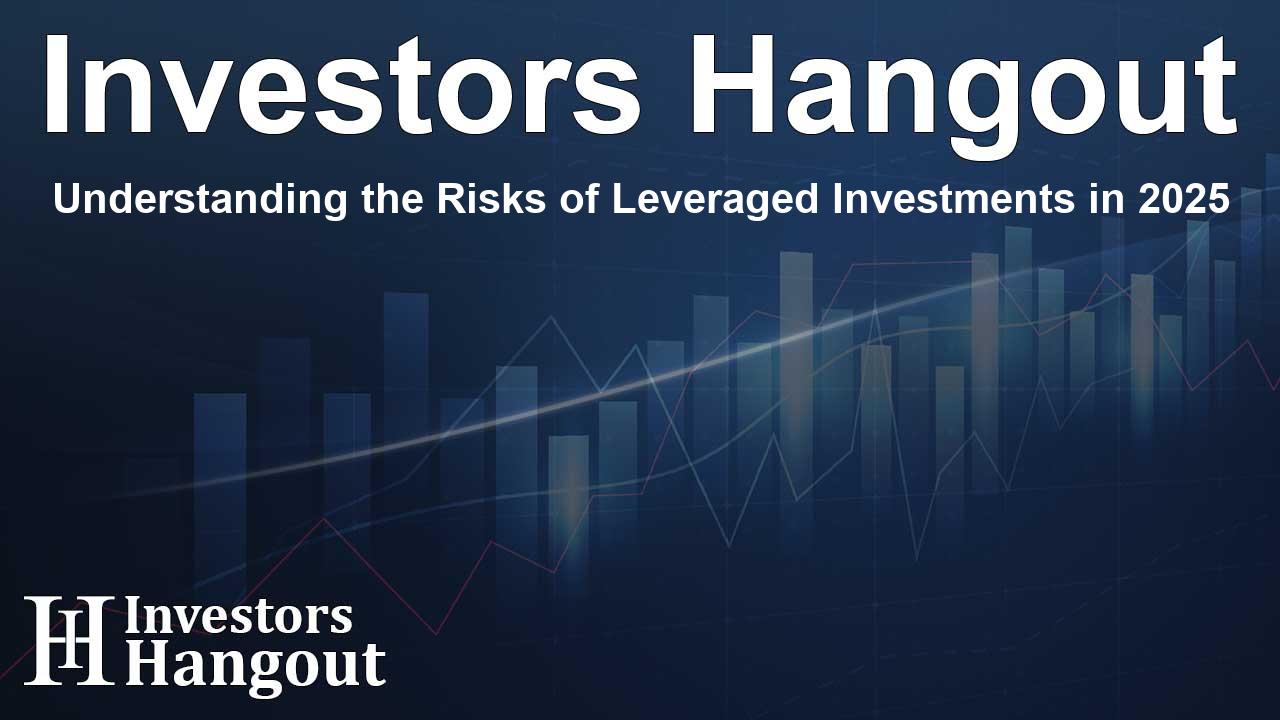Understanding the Risks of Leveraged Investments in 2025

The Changing Landscape of Stock Market Strategies
In today's stock market, there's an undeniable hunger for leverage among investors. Many retail investors are boldly navigating the unpredictable waters of the market, seemingly unfazed by recent economic fluctuations tied to technology and cryptocurrency.
Leveraging: A Historical Perspective
Ruchir Sharma offers valuable insights on this trend, stating that the culture of leveraging investments traces back to significant market interventions, such as the bailout of a major US bank in the mid-80s and the Federal Reserve's commitment to support the market in 1987. Over the years, as these bailouts became more frequent and substantial, investor behavior evolved to favor the 'buy the dip' mentality, believing that state backing limits losses while enhancing potential gains.
The Illusion of Safety
This evolving sentiment has fostered a more speculative environment, with many investors viewing the stock market through a lens that emphasizes asymmetric risks. However, as market dynamics shift, this strategy may encounter obstacles that could challenge its previous successes.
Emerging Concerns in the Market
Current data highlights a troubling trend of increasing vulnerability within the stock market. As reported, major US stocks are exhibiting signs of instability, leading to an unprecedented level of single-stock 'fragility.' This development raises concerns that the market may soon experience volatile shifts reminiscent of the dot-com era.
AI's Impact on Market Dynamics
The advent of open-source artificial intelligence introduces another layer of complexity. Insights from industry experts suggest that if open-source AI proves more efficient than anticipated, it could undermine the narrative that relies heavily on top-tier technology firms, particularly those like Nvidia (NASDAQ: NVDA). Such advancements may shift the focus and capital allocation towards other emerging technologies.
Diversifying Investment Options
Interestingly, the investment landscape is beginning to diversify beyond traditional tech giants. What was once viewed as a safe haven for capital, a select group of mega-cap US tech stocks, is evolving. Today's market offers an intriguing array of alternatives including U.S. treasuries, Latin American equities, and various infrastructures and commodities.
Additionally, investors are increasingly considering equities from regions such as China and Europe, finding attractive opportunities that could reshape their portfolios. Louis Vincent-Gave notes this shift, emphasizing the changing dynamics and renewed investor interest in a broader spectrum of investment avenues.
The Future of 'Buy the Dip'
As we look ahead, the fundamental success of the 'buy the dip' strategy may be put to the test. Investors will need to adapt and reevaluate their strategies in light of the current market trends and economic indicators. Awareness of potential instability is crucial for making informed choices in the evolving landscape.
Frequently Asked Questions
What does 'buy the dip' mean?
'Buy the dip' is an investment strategy where investors purchase stocks after they have decreased in price, anticipating that their value will recover and increase in the future.
Why is leverage risky in today's market?
Leverage increases the potential for higher returns but also amplifies losses, making it especially risky in a volatile market environment.
What are some alternatives to investing in major tech stocks?
Alternatives include U.S. treasuries, Latin American equities, European markets, infrastructure projects, and commodities, providing a wider array of investment opportunities.
How can AI affect traditional investment strategies?
AI advancements can disrupt reliance on specific companies and potentially lead to greater efficiency and competitive dynamics within the investment landscape.
What indicators should investors watch for market instability?
Investors should monitor volatility measures, economic indicators, and sector-based trends that signal shifts in market stability.
About The Author
Contact Dylan Bailey privately here. Or send an email with ATTN: Dylan Bailey as the subject to contact@investorshangout.com.
About Investors Hangout
Investors Hangout is a leading online stock forum for financial discussion and learning, offering a wide range of free tools and resources. It draws in traders of all levels, who exchange market knowledge, investigate trading tactics, and keep an eye on industry developments in real time. Featuring financial articles, stock message boards, quotes, charts, company profiles, and live news updates. Through cooperative learning and a wealth of informational resources, it helps users from novices creating their first portfolios to experts honing their techniques. Join Investors Hangout today: https://investorshangout.com/
The content of this article is based on factual, publicly available information and does not represent legal, financial, or investment advice. Investors Hangout does not offer financial advice, and the author is not a licensed financial advisor. Consult a qualified advisor before making any financial or investment decisions based on this article. This article should not be considered advice to purchase, sell, or hold any securities or other investments. If any of the material provided here is inaccurate, please contact us for corrections.
